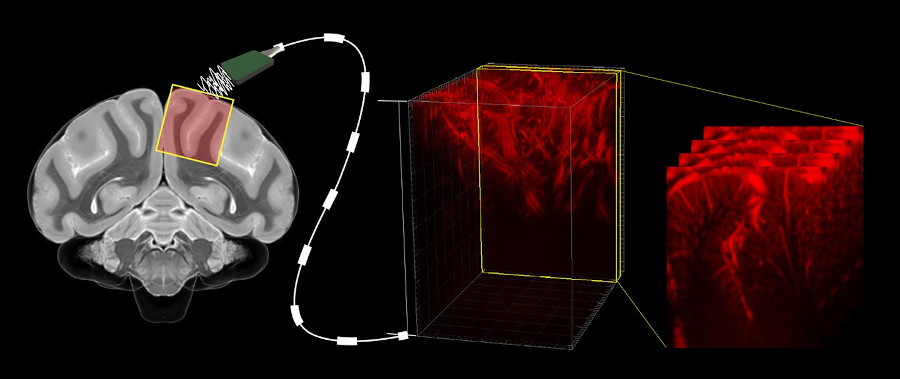
Functional ultrasound as a read-out for brain-machine interfaces
Brain-machine interfaces (BMI) are meant to assist paralyzed people by enabling them to command external instruments with their thoughts. Current BMI technologies rely on sensors implanted in the brain to read out the neural activity. Functional ultrasound (fUS) could provide a minimally-invasive alternative, besides offering brain activity mapping at high sensitivity. A collaboration associating our laboratory and several departments of the California Institute of Technology has demonstrated that fUS can capture brain signals related to movement intentions. This important milestone in the development of fUS-based BMI has been published this Month in Neuron.
Brain-machine interfaces (BMI) aim at using brain signals to drive external machines. For instance, paralyzed people equipped with BMI can operate a robotic arm with their thoughts. This research field is of major importance to restore some autonomy to patients with impaired motricity. BMI requires a read-out technology capable of recording the brain activity related to intentions, and decoding algorithms to translate this activity into commands for the external device. The read-out is currently achieved using intracortical electrodes implanted in the brain, which enable precise control of external devices, but expose the patient to infection risks, limiting the number of eligible patients. Functional ultrasound could be a good candidate as a minimally-invasive read-out method. It presents the following advantages:
- recordings could be performed through a less-invasive epidural sensor, and could therefore be applied to a larger number of patients
- it gives a remote access to signals from deep brain regions
- its high sensitivity allows single-trial (i.e. no need to average over multiple recordings) detection of brain activity related to movement intentions, a key-feature for BMI
Read the explanations on the study by our colleagues at Caltech: “Reading minds with ultrasound: a less-invasive technique to decode the brain’s intentions”.
In the present study, a first demonstration of these performances was made on non-human primates. Functional ultrasound was used to capture brain signals as the animals were performing visual tasks. Algorithms were then developed following a machine-learning approach to decode the fUS signals and predict the animal’s ocular movement or intention to make an ocular movement. These results lay the foundations for using functional ultrasound as a minimally-invasive and performant read-out for BMI.
Full citation: Norman SL, Maresca D, Christopoulos VN, Griggs WS, Demene C, Tanter M, Shapiro M and Andersen R. Single Trial Decoding of Movement Intentions Using Functional Ultrasound Neuroimaging. Neuron 2020. https://doi.org/10.1101/2020.05.12.086132





